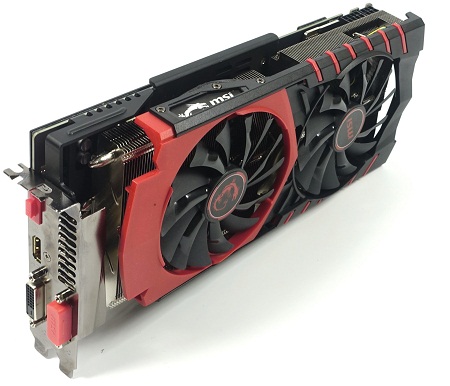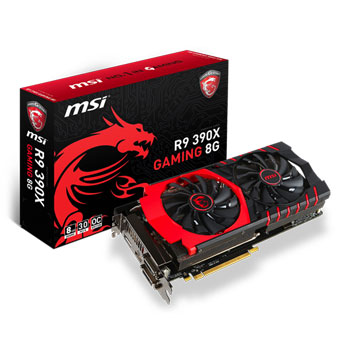UAE Shops - Established in 2002
عربى
Msi Vga R9 390x Gaming 8g
Core Clock / Memory Clock 1000 MHz / 5800 MHz (OC Mode) 980 MHz / 5700 MHz(Gaming Mode) 970 MHz / 5700 MHz (Silent Mode) 4096 MB GDDR5 Video Output Function Dual-link DVI-I x 1 Dual-link DVI-D x 1 HDMI x 1 DisplayPort x 1 Product Description MSI VGA R9 390X GAMING 8G AMD’s approach to new generations of graphics processors has been different for the past two generations. The Radeon R9 200 series initially saw the introduction of just one silicon, codenamed “Hawaii,” which drove the company’s previous flagship R9 290 series, while the rest of the lineup saw a cascading re-badging from the previous generation. AMD’s previous generation flagship, the HD 7900 series, went on to become the performance-segment R9 280 series, and so on, and the performance-segment “Tonga” silicon was added afterward. The story is predictable even today. With this generation, there is essentially one new silicon, the HBM-equipped “Fiji,” which will be launched later this month and will eventually drive up to five products from AMD. The previous-generation flagship silicon “Hawaii” now drives AMD’s performance-segment products, the Radeon R9 390 and R9 390X we’re reviewing today. The Radeon R9 390X is based on the “Hawaii” silicon (now referred to as “Grenada” without any silicon changes) and features the same core-configuration as the R9 290X. The standard memory amount has been doubled to 8 GB across the board and clock speeds see an increase from 1000 MHz to 1050 MHz on the core and from 5.00 Gbps to 6.00 Gbps on the memory. AMD’s approach to pricing is interesting. Expected to compete with the $480 GeForce GTX 980, the R9 390X is boldly priced at $429. There have been no tweaks that we know of to the chip’s electricals, and so custom-design boards such as the MSI Radeon R9 390X Gaming 8G we’re reviewing today feature the same heavy-spec TwinFrozr V triple-slot cooling solution the company is using on its enthusiast-segment dual-slot GTX 980 Ti Gaming. MSI’s card comes with a minor factory-OC that has the core running at 1100 MHz and memory at 6.10 Gbps. We’ve never tested a Radeon R9 290X 8 GB before this, and AMD is not sampling their reference design, so we’re eager to see how the increased memory helps this chip, particularly at 1440p and 4K resolutions with some of the newer memory-hungry games we’ve added to our bench suite in the past few months. Radeon R9 390X Market Segment Analysis Radeon R9 290 GeForce GTX 970 Radeon R9 290X Radeon R9 390X MSI R9 390X Gaming GeForce GTX 780 Ti GeForce GTX 980 Radeon Fury X GeForce GTX 980 Ti Shader Units 2560 1664 2816 2816 2816 2880 2048 4096 2816 ROPs 64 56 64 64 64 48 64 64 96 Graphics Processor Hawaii GM204 Hawaii Hawaii Hawaii GK110 GM204 Fiji GM200 Transistors 6200M 5200M 6200M 6200M 6200M 7100M 5200M 8600M 8000M Memory Size 4096 MB 4096 MB 4096 MB 8192 MB 8192 MB 3072 MB 4096 MB 8192 MB 6144 MB Memory Bus Width 512 bit 256 bit 512 bit 512 bit 512 bit 384 bit 256 bit 4096 bit 384 bit Core Clock 947 MHz 1051 MHz+ 1000 MHz 1050 MHz 1100 MHz 876 MHz+ 1126 MHz+ 1050 MHz 1000 MHz+ Memory Clock 1250 MHz 1750 MHz 1250 MHz 1500 MHz 1525 MHz 1750 MHz 1750 MHz 500 MHz 1750 MHz





